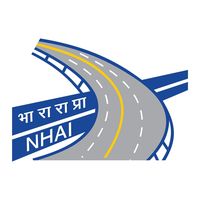Infrastructure Revolution: India's Road to Progress
October 19, 2024, 4:57 am

Location: France, Ile-de-France, Saint-Ouen-sur-Seine
Employees: 10001+
Founded date: 1928
Total raised: $10M

Location: India, Delhi, New Delhi
Employees: 1001-5000
Founded date: 1988
Total raised: $4.83B
India is on the brink of an infrastructure revolution. The National Highway Authority of India (NHAI) is leading the charge with ambitious projects aimed at easing congestion and enhancing connectivity. Recent announcements highlight a series of developments that promise to reshape the transportation landscape.
The NHAI is nearing completion of flyovers at the Bhankrota and Kamala Nehru Nagar intersections in Jaipur. This project, with a budget of approximately ₹200 crore, is designed to tackle the daily traffic woes faced by around 1.25 lakh commuters. Picture this: during peak hours, some travelers endure wait times of up to 198 minutes. That's not just a delay; it's a drain on productivity and patience. The new flyovers and an underpass at the Ajmer Road intersection aim to cut through this chaos like a hot knife through butter.
The detailed project report (DPR) for these flyovers is expected to be finalized soon. Once approved by the Union Ministry of Road Transport and Highways, the tender process will kick off in January 2025. This initiative is not just about building structures; it’s about building a future where travel is seamless and efficient. The flyover will stretch over 1,600 meters, facilitating smoother traffic flow from Ajmer, Bagru, and Bhankrota toward Delhi and Sikar.
Meanwhile, the Rail Vikas Nigam Limited (RVNL) has won the bid for the civil package C6 of the Nagpur Metro Phase 2 project. This contract involves constructing 10 elevated metro stations along a 19.4 km stretch. Imagine the ease of hopping on a train that glides above the city, bypassing the gridlock below. The new metro lines will connect key areas, making urban travel a breeze. The Maha-Metro is pushing boundaries, ensuring that the people of Nagpur can traverse their city with speed and comfort.
Chennai is also making strides in urban transport. The city has received its first driverless trainset for the Phase II project from Alstom. This marks a significant leap into the future of public transport. With 36 trains ordered, each designed to run on a 26-kilometer corridor, Chennai is embracing smart mobility. The driverless trains promise efficiency and eco-friendliness, transforming the daily commute into a pleasant experience. The designs, crafted in Bengaluru, reflect a commitment to innovation and sustainability.
While these projects are set to enhance connectivity, environmental concerns loom large. The National Green Tribunal (NGT) has directed Uttarakhand to establish a timeline for waste management in Kedarnath. The plea arose from allegations of untreated sewage polluting the Mandakini river. This is a wake-up call. Infrastructure development must go hand in hand with environmental stewardship. The NGT's directive emphasizes the need for a balanced approach, ensuring that progress does not come at the cost of nature.
In a broader context, the Indian government has approved a sub-₹1,000 crore shortcut project under the Bharatmala Pariyojana. This initiative aims to enhance road connectivity and streamline highway routes. The Bharatmala project is a colossal undertaking, targeting the development of 34,800 km of roads. The shortcut project exemplifies how smaller, targeted interventions can yield significant benefits. By focusing on cost-effective solutions, the government is poised to expedite highway construction while maintaining budgetary discipline.
These developments are not just about roads and trains; they are about economic growth. Improved infrastructure translates to faster movement of goods, reduced vehicle operating costs, and enhanced logistics. The ripple effect of these projects will be felt across various sectors, boosting India’s competitiveness on a global scale.
The NHAI’s focus on innovative planning and leveraging existing infrastructure is commendable. It showcases a strategic approach to solving long-standing issues. The integration of these projects with the larger Bharatmala scheme underscores a commitment to regional development. It’s a roadmap to a future where travel is not just a necessity but a pleasure.
As India strides forward, the commitment to sustainable and efficient infrastructure is evident. The government’s vision is clear: to create a robust transportation network that supports economic growth while being mindful of environmental impacts. This dual focus is crucial for a country that aspires to be a global leader.
In conclusion, India is at a pivotal moment. The infrastructure projects underway are not just about building roads and railways; they are about building a nation. A nation that values efficiency, sustainability, and progress. As these projects come to fruition, they will pave the way for a brighter, more connected future. The journey has begun, and the destination is promising.
The NHAI is nearing completion of flyovers at the Bhankrota and Kamala Nehru Nagar intersections in Jaipur. This project, with a budget of approximately ₹200 crore, is designed to tackle the daily traffic woes faced by around 1.25 lakh commuters. Picture this: during peak hours, some travelers endure wait times of up to 198 minutes. That's not just a delay; it's a drain on productivity and patience. The new flyovers and an underpass at the Ajmer Road intersection aim to cut through this chaos like a hot knife through butter.
The detailed project report (DPR) for these flyovers is expected to be finalized soon. Once approved by the Union Ministry of Road Transport and Highways, the tender process will kick off in January 2025. This initiative is not just about building structures; it’s about building a future where travel is seamless and efficient. The flyover will stretch over 1,600 meters, facilitating smoother traffic flow from Ajmer, Bagru, and Bhankrota toward Delhi and Sikar.
Meanwhile, the Rail Vikas Nigam Limited (RVNL) has won the bid for the civil package C6 of the Nagpur Metro Phase 2 project. This contract involves constructing 10 elevated metro stations along a 19.4 km stretch. Imagine the ease of hopping on a train that glides above the city, bypassing the gridlock below. The new metro lines will connect key areas, making urban travel a breeze. The Maha-Metro is pushing boundaries, ensuring that the people of Nagpur can traverse their city with speed and comfort.
Chennai is also making strides in urban transport. The city has received its first driverless trainset for the Phase II project from Alstom. This marks a significant leap into the future of public transport. With 36 trains ordered, each designed to run on a 26-kilometer corridor, Chennai is embracing smart mobility. The driverless trains promise efficiency and eco-friendliness, transforming the daily commute into a pleasant experience. The designs, crafted in Bengaluru, reflect a commitment to innovation and sustainability.
While these projects are set to enhance connectivity, environmental concerns loom large. The National Green Tribunal (NGT) has directed Uttarakhand to establish a timeline for waste management in Kedarnath. The plea arose from allegations of untreated sewage polluting the Mandakini river. This is a wake-up call. Infrastructure development must go hand in hand with environmental stewardship. The NGT's directive emphasizes the need for a balanced approach, ensuring that progress does not come at the cost of nature.
In a broader context, the Indian government has approved a sub-₹1,000 crore shortcut project under the Bharatmala Pariyojana. This initiative aims to enhance road connectivity and streamline highway routes. The Bharatmala project is a colossal undertaking, targeting the development of 34,800 km of roads. The shortcut project exemplifies how smaller, targeted interventions can yield significant benefits. By focusing on cost-effective solutions, the government is poised to expedite highway construction while maintaining budgetary discipline.
These developments are not just about roads and trains; they are about economic growth. Improved infrastructure translates to faster movement of goods, reduced vehicle operating costs, and enhanced logistics. The ripple effect of these projects will be felt across various sectors, boosting India’s competitiveness on a global scale.
The NHAI’s focus on innovative planning and leveraging existing infrastructure is commendable. It showcases a strategic approach to solving long-standing issues. The integration of these projects with the larger Bharatmala scheme underscores a commitment to regional development. It’s a roadmap to a future where travel is not just a necessity but a pleasure.
As India strides forward, the commitment to sustainable and efficient infrastructure is evident. The government’s vision is clear: to create a robust transportation network that supports economic growth while being mindful of environmental impacts. This dual focus is crucial for a country that aspires to be a global leader.
In conclusion, India is at a pivotal moment. The infrastructure projects underway are not just about building roads and railways; they are about building a nation. A nation that values efficiency, sustainability, and progress. As these projects come to fruition, they will pave the way for a brighter, more connected future. The journey has begun, and the destination is promising.
